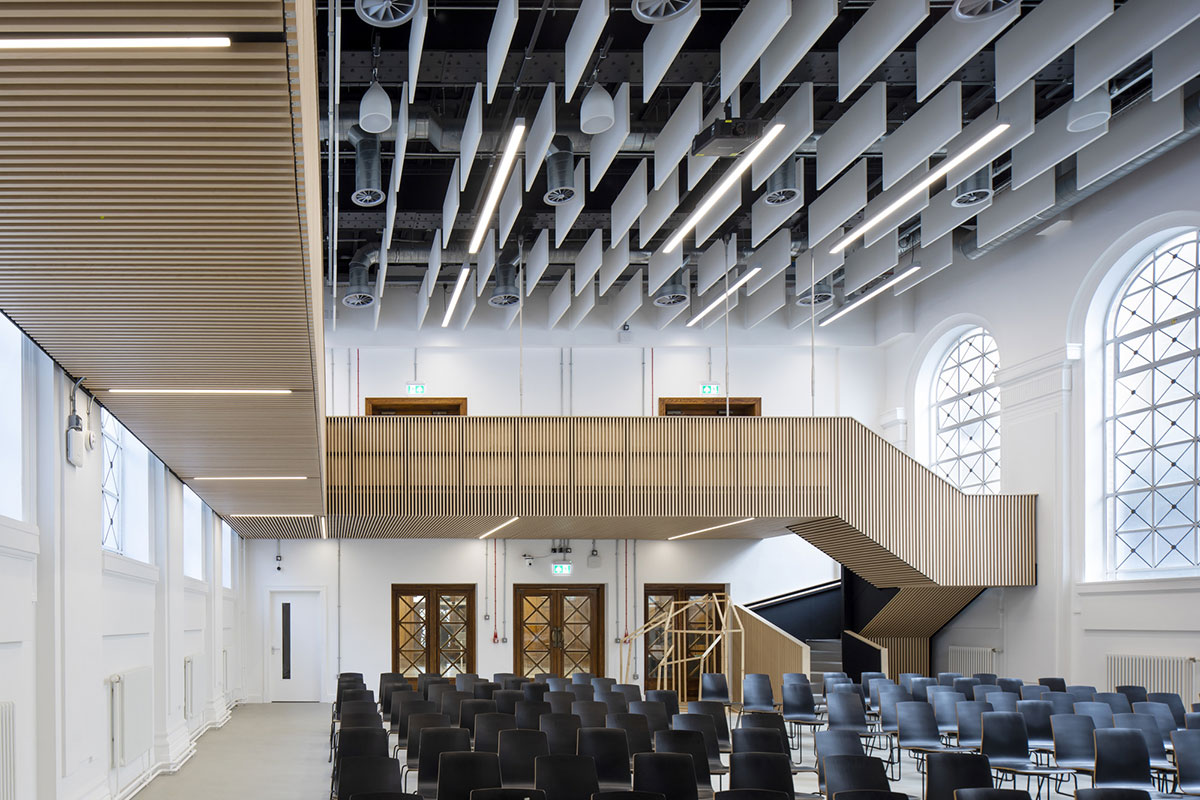#{Title}
#{Copy}
 Architect Rob Stevens defends the inimitable character of the reinstated Bute Building and how the sensitive reinterpretation is based on a thorough understanding of the original design.
Architect Rob Stevens defends the inimitable character of the reinstated Bute Building and how the sensitive reinterpretation is based on a thorough understanding of the original design.
The stakes are always high when refurbishing a listed building, particularly when the original architect is as respected as Sir Percy Thomas. The Grade II Listed Bute Building is one of his first major works won through limited competition in 1912 with construction continuing throughout the First World War. The Technical Institute, as it was known, opened in 1916, housing a melting pot of science laboratories, engineering workshops, architectural drawing rooms and even a bakery.

The Pevsner Architectural Guide states “for all its size and prestigious location, it is disappointingly conventional.”
Having both studied and taught at the building, it's hard not to agree - it’s certainly not a building of flourishes or embellishments, but it is stoic and has stood the test of time. Whilst modern additions have diluted the clarity of the building, it has maintained its timeless qualities.
From the outset, it was clear that the project would be as much about what was extracted from the building to reinstate its character as what we restored. This understanding kick-started our approach to sensitive and intelligent re-purposing. The first priority was to restore the clarity of the original design. Many spaces had been sub-divided over the years in an attempt to carve out more area, with new mezzanines, partition walls and suspended ceilings. We stripped these out to revive the original design intent for the open, flexible studio of the Technical Institute.


This resulted in a net reduction of useable floor area of the building, but in doing so, we created larger, lighter, more user-friendly spaces, using a light-touch, expressive and honest approach to reveal the historic structure.
The front entrance and vestibule contain some of the more significant heritage aspects in the historic timber panelling. This made the objective of creating a revitalised identity for the Welsh School of Architecture all the more challenging. If the Bute Building was to embody the school’s identity and ethos of creativity, craft and sustainability, this would need to be communicated through a ‘front door’ presence. A careful approach to the new entrance creates a visual connectivity of adjacent spaces, offering glimpses into the reception area, living lab and exhibition hall beyond, whilst restoring the former heritage elements and original proportions of the vestibule. The harmonious fusion of contemporary joinery and restored parquet flooring extends the satisfying juxtaposition of new and old.


The original Assembly Hall at the centre of the building had been concealed for the best part of three decades. Once a beautifully proportioned double-height space with a large spanning barrel vault and five bays of tall, round-headed windows on either side, it had been hidden within the Birt Acres lecture theatre, with only vestiges of the original space on the flanking walls serving as a reminder of the hidden heritage. It was self-evident that the lecture theatre would come out, the challenge was balancing the new intervention; the functional requirements of the brief – flexibility, connectivity and identity – had to align not only with the history of the space, but also the scale, proportion and ingress of natural light.
Using the lightest of touches simple hanging galleries suspended at first floor retain the open-plan space at ground. The birch-faced timber is deliberately muted and complementary to the existing fabric, but unapologetically modern, making a clear distinction between the ‘old’ and the ‘new’.
The Welsh School of Architecture can proudly reclaim a reinvigorated teaching environment, instilling fresh momentum for staff and the next generation of architects, responding to meet the demands and deliver the skills for the modern architectural profession.
